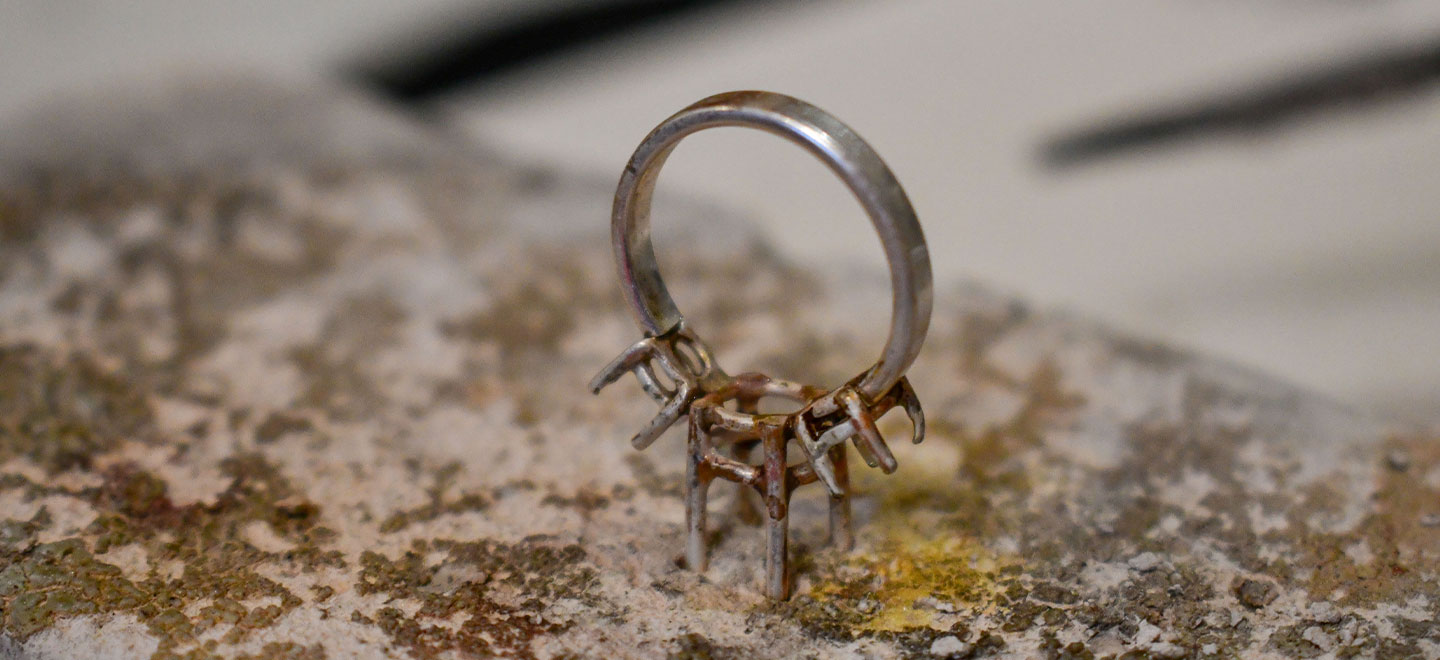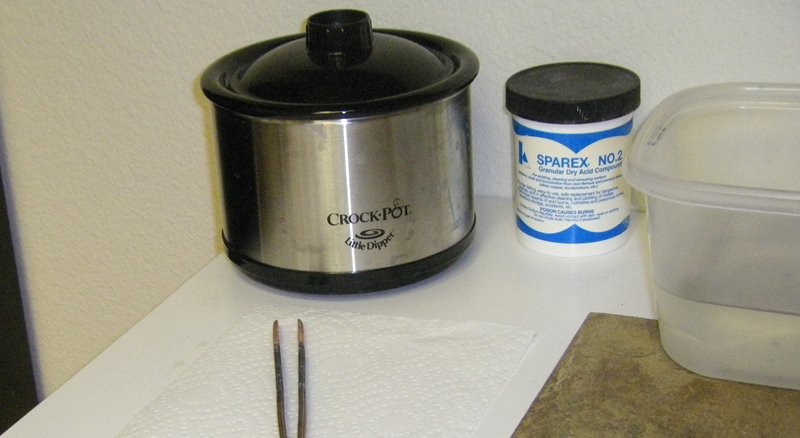Firescale naturally occurs during the soldering process. Read on to learn what firescale is and how to pickle it off your jewelry.
Every time you solder jewelry, be ready to pickle your piece as you go. Pickling is simply dissolving firescale from the top layer of your piece after it has been heated. It's called pickling because jewelers used to remove firescale with a solution of alum, which is the same compound used to make pickles.
What is Firescale?
Firescale occurs to some degree every time your piece is heated, whether it is made of silver, brass or copper. Heating metal causes copper oxides to rise and mix with the air to create a purple, gray or blue color on the surface of the metal.
Sterling silver tends to get a lot of firescale on it and here's why: Metalsmiths heat pieces several times during the jewelry making process. When metal becomes work-hardened, we anneal it. When we solder joints together, we torch it. Just using a Flex Shaft or a bench polisher heats it up, too, so we are constantly bringing the copper oxides to the surface where it tries to balance itself with the silver already present. We can remove this firescale with a nice, warm bath of jeweler's pickling solution. SHOP SOLDER >>
What You Need:
Safety gear
Wear an apron to protect your clothes and safety glasses to protect your eyes. If you have long hair, make sure that you tie it back. Work in a well-ventilated area and be prepared to follow any other precautions listed on the package.
Pickle pot
Pickle works best at a warm temperature, so use a small crock pot that will warm up the solution without boiling it. Please note that this crockpot is now a permanent part of your jewelry studio. It is no longer safe to use for food preparation of any kind!
Pickle solution
We use Sparex #2 in our studio, which is a sodium bisulfate acid. Follow the manufacturer's instructions on the package to mix the dry compound into the water. We also offer Citric Acid Pickle. It may take more material to make a strong solution and will take longer to remove firescale, but it will not harm your clothes, bench surfaces and flooring like other acids will.
Quench bowl
Use a bowl of water to remove acid from your piece after the pickling process.
Copper tongs
Sparex pickle reacts to steel tweezers/tongs causing it to plate copper onto your metal. So, only add/remove your pieces with copper tongs (although I've heard plastic and woodwork too). If steel gets into your solution, most people recommend making a new batch of Sparex pickle. Citric acid pickle, on the other hand, is safe to use with steel.
The Pickling Process
- Prep your work area. Turn on fans and get your safety gear ready
- Mix your solution by following the manufacturer's instructions on the package.
- Turn your crockpot to the low setting. The solution should be warm but not boiling.
- Solder your piece.
- Allow the soldered piece to naturally air cool for a few minutes in a pumice cup or on any heat resistant surface. Note: You don't want to quench it or pickle it too soon because they both cause too much steam that can remove delicate parts on your piece, plus, they can cause the metal to become stressed too quickly. It's better to allow natural cooling before pickling.
- Pick up the metal with copper tongs and carefully drop it into the pickle solution.
- Check on it every couple of minutes until the firescale is removed.
- Use only your copper tongs to pull it from the crockpot and rinse it in the water. Don't be surprised if the piece is white when removed. The pickle causes the top layer of copper to be removed from the piece, so what is left is pure silver on the top layer causing the white appearance as you pull it from the pickle pot.
- Now, you're ready to polish and finish your piece!
Disposing Of Your Pickle Solution
Small strainer
Remove any solid metal pieces from your solution.
Baking soda
Both types of jeweler's pickle will last for weeks or months before you need to change it. If you're using Sparex, you'll need to neutralize it with baking soda before disposal. To neutralize it, add heaping tablespoons of baking soda to your crockpot until the solution no longer reacts by bubbling up. Citric acid pickle doesn't need to be neutralized.
Steps for proper disposal:
- Strain.
- Neutralize.
- Pour down the drain or dilute and pour into your garden, especially on acid-loving plants like roses!
Further Reading:
5 Steps to Start Silver Soldering
Solders, Torches & Fuels Used in a Jewelry Studio
Soldering Half Round Wire & Pattern Wire for Rings
Learn to solder!
Got questions? Email our studio coordinator at [email protected]. We’d love to hear from you. Sorry, studio support is not available by phone. Emails only, please.







